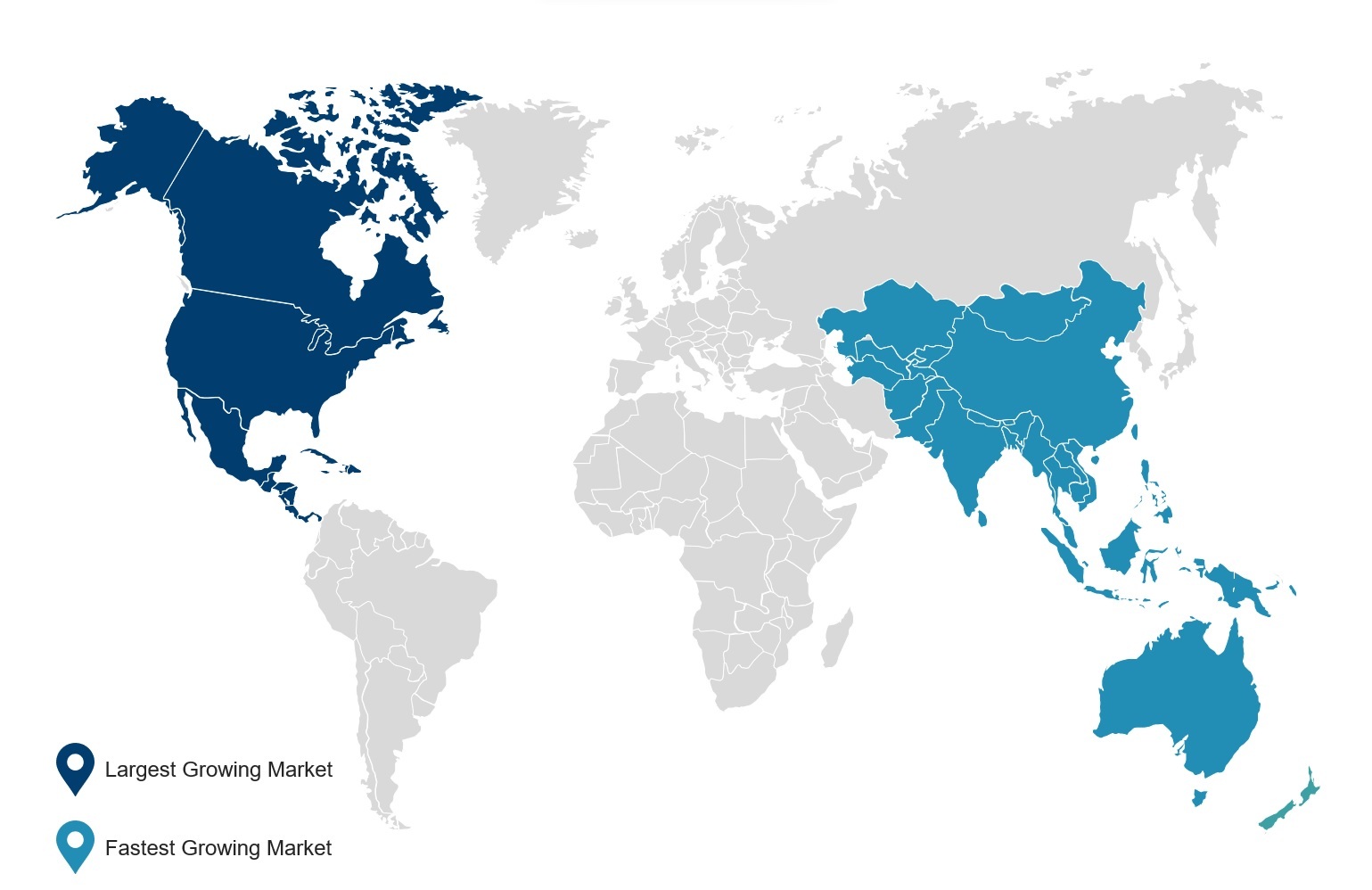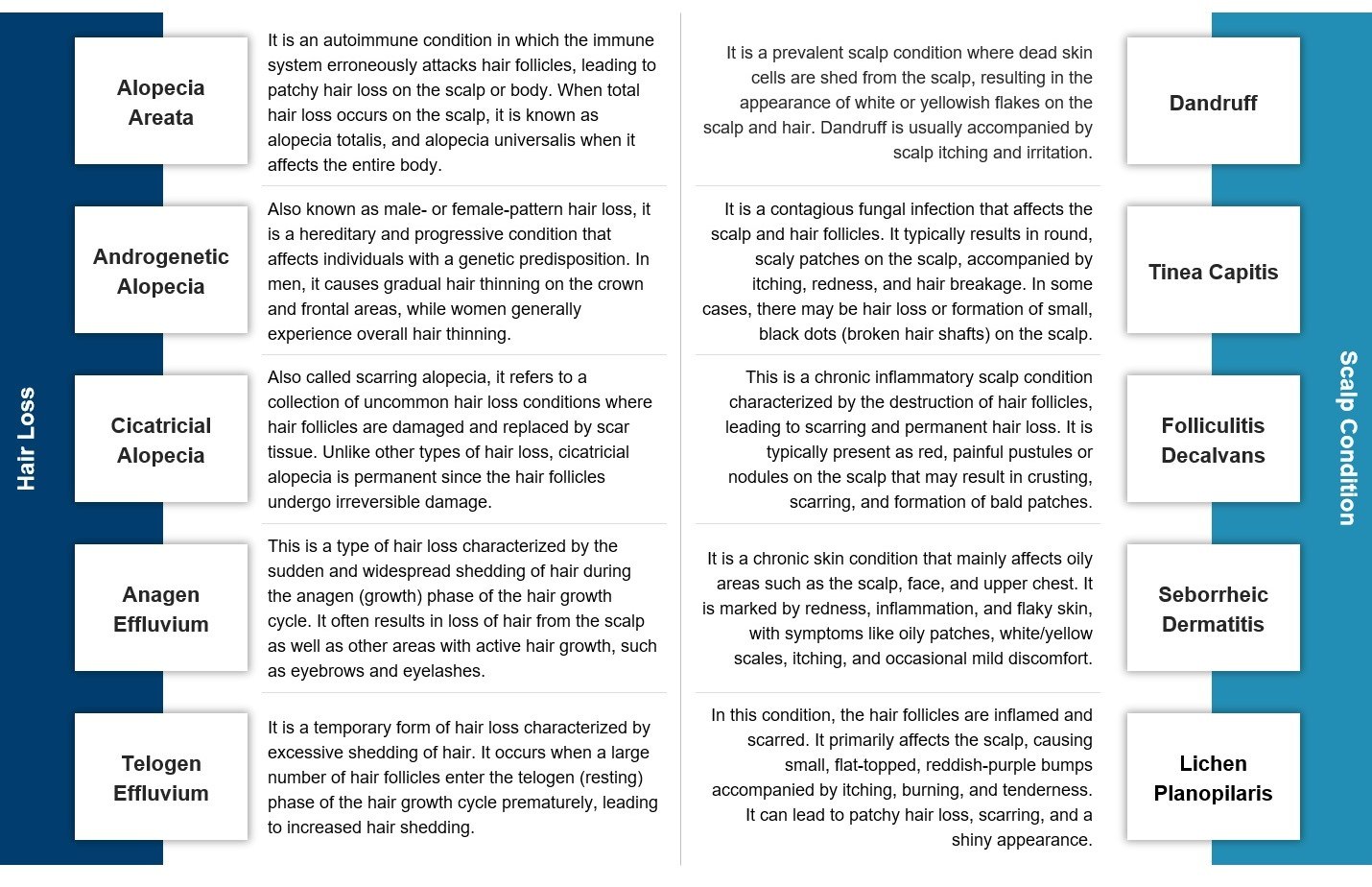Exploring the Issue of Hair Loss and Underlying Health Conditions
Published on 25 Sep, 2023

Hair loss affects a large section of the global population irrespective of age, gender, and ethnicity. This issue can be ascribed to multiple factors including genetic predisposition, lifestyle choices, and environmental influences; however, it also serves as a subtle yet revealing indicator of underlying health conditions.
Hair loss is a widely common problem faced by both men and women across the world. Although generally associated with the scalp, it can also impact eyebrows, eyelashes, and facial hair, including beard. Preliminary indications of hair loss are gradual and progressive thinning of hair, emergence of bald patches with slow regrowth, recession of the hairline that becomes increasingly conspicuous over time, widening of the part partition in hair, and reduction in volume.
Recognizing these initial symptoms and prompt interventions may sometimes decelerate or manage the condition. Regular consultations with a dermatologist or qualified healthcare professional can help to monitor changes and determine an appropriate, tailored course of action.
Hair loss is a multifaceted issue encompassing categories such as androgenetic alopecia, alopecia areata, and effluvium. Various factors contribute to hair loss, including stress from work and societal pressure, poor lifestyle with inadequate diet and nutrient deficiencies, hormonal imbalance-related conditions such as polycystic ovary syndrome (PCOS), genetic predisposition, environmental exposure to contaminants, improper hair care practices, use of harsh cosmetics, and natural aging process.
Hair Loss Treatment Market
Hair loss impacts a substantial demographic within the United States, including 35 million men and 21 million women. The phenomenon of pattern hair loss, scientifically termed as androgenetic alopecia (AGA), extends its reach notably among Asian men and women, manifesting at an incidence rate of up to 73% within the broader population. It is interesting to note that 8 of the top 10 nations battling with the complexities of hair loss are situated in Europe. Notably, androgenetic alopecia is the predominant manifestation of hair loss among the male demographic.
The market size for hair growth products is poised to grow from ~USD 1.9 billion in 2023 to ~USD 2.80 billion by 2028. While North America currently has the largest market share, Asia-Pacific has the highest growth in this sector. This growing demand is attributed to the heightened incidence of hair loss concerns prevalent in Asian demographics.
Several factors drive the growth of the global hair growth products market. These include changing lifestyles, escalating pollution levels, and rising incidence of chronic illnesses contributing to long-term hair loss. Additionally, the market for female hair loss products is likely to see rapid growth attributed to increased awareness, evolving lifestyles, higher incidence of PCOS, and rising preference for cosmetic procedures. These interconnected factors synergistically create an environment conducive to sustained market growth.

Hair Loss and Scalp Diseases
As mentioned, hair loss can present itself through diverse conditions, encompassing variants such as alopecia areata, androgenetic alopecia, cicatricial alopecia, anagen effluvium, and telogen effluvium. These conditions often lead to noticeable hair thinning or patches of baldness. Additionally, scalp conditions such as dandruff and seborrheic dermatitis – marked by flakiness, itchiness, inflammation, and irritation – could cause discomfort and potentially worsen hair loss. Neglected, these scalp problems can interrupt the natural hair growth cycle and play a significant role in hair loss.

Tackling the root causes of hair loss and scalp health is crucial in managing and preventing further hair loss.
Treatments
Numerous products and therapies aimed at combating hair loss are available in the market, utilizing various application methods such as oral, topical, and transdermal routes or a combination of different therapies. The market offers a range of treatment options such as follows:
- Devices
- Light therapy: This emerging, non-intrusive method for addressing hair loss that involves the use of lasers, LEDs, and excimer lamps to activate hair follicles, potentially fostering promoting hair growth.
- Sound therapy: This method involves the application of distinct sound frequencies or vibrations to invigorate hair follicles and encourage hair growth. This approach seeks to improve blood circulation, cellular functions, and conveyance of nutrients to the scalp.
- Hair Growth Supplements: Various supplements enriched with vitamins, botanical extracts, and probiotics are readily available in the market and popular due to ease of use, perceived safety, and ability to supply essential nutrients for improving hair well-being and promoting growth.
- Topical Formulations: Rising consumer demand has led to the prevalence of products infused with plant-derived extracts and biomolecules. Concurrently, researchers are actively exploring the blend of clinically proven chemical compounds such as minoxidil and finasteride with other active constituents to enhance the effectiveness of hair loss treatments, invigorate hair follicles, improve overall scalp health, and promote strong hair growth.
Outlook
Advancements in hair loss are expected to focus on early intervention, risk assessment, personalized solutions, and AI integration. Public awareness campaigns would encourage individuals to seek expert advice at an early stage, while tools would assist in assessing risks and benefits to make informed decisions. Rather than adopting a one-size-fits-all approach, treatments would be tailored to individual factors such as genetics, medical history, and lifestyle. AI is expected to aid diagnosis and suggest tailored treatments, potentially delivered through virtual healthcare and remote monitoring. Furthermore, advances in biotechnology may lead to breakthroughs in hair growth solutions. Collaborative efforts in diverse fields of expertise aim to devise innovative and personalized approaches for effectively and safely addressing hair loss.
In the next article, we will explore various innovations and technologies that are being developed to overcome hair loss.

